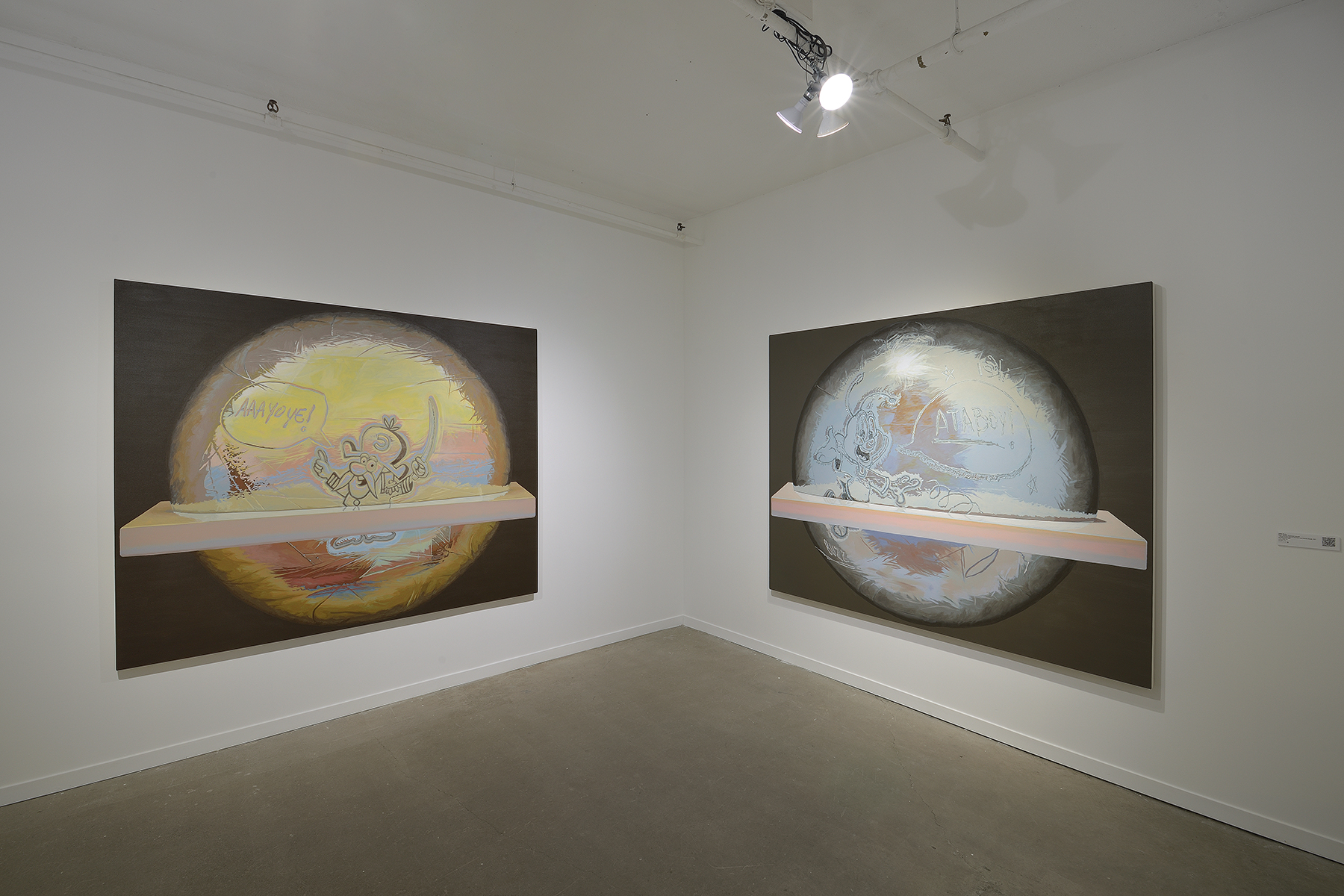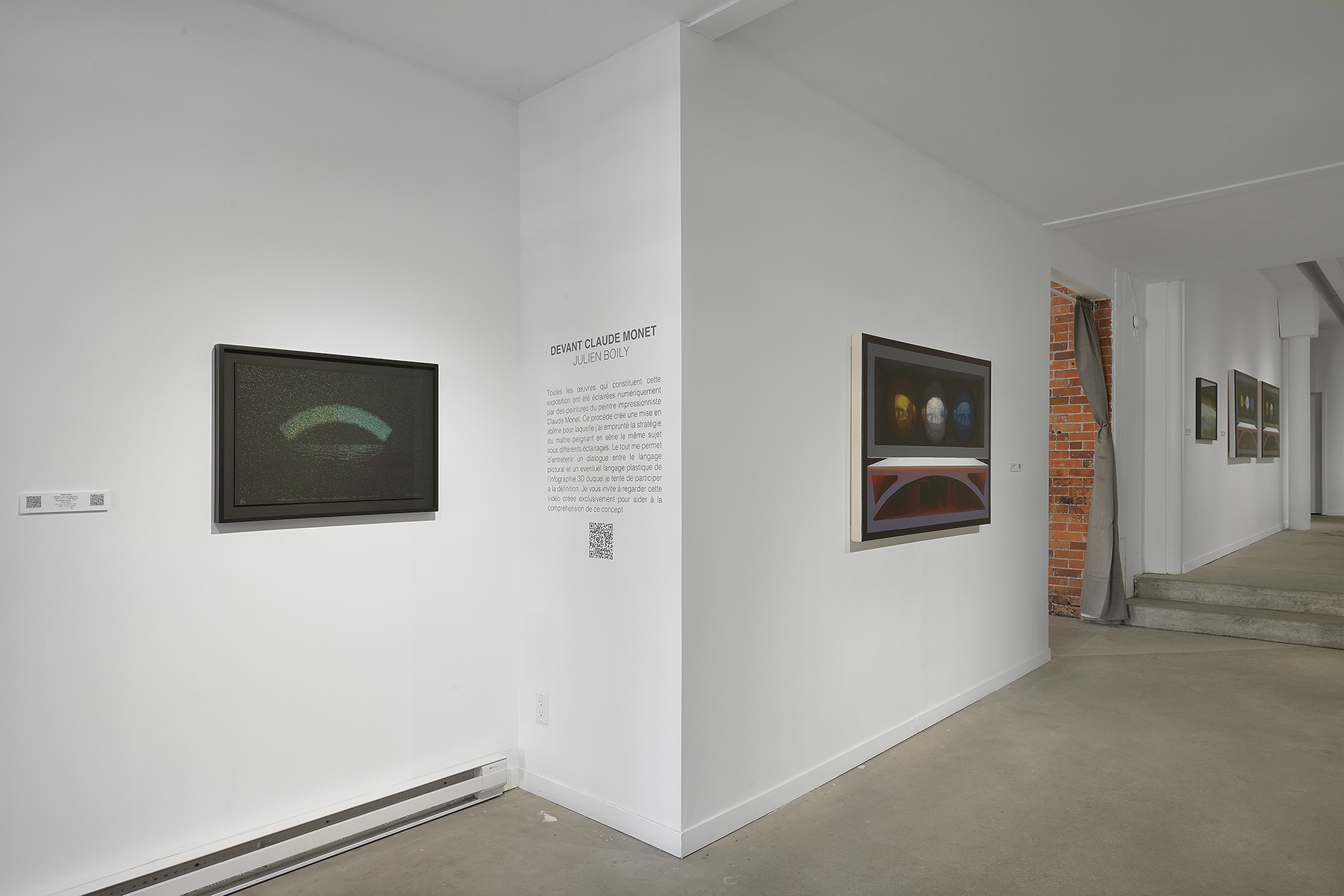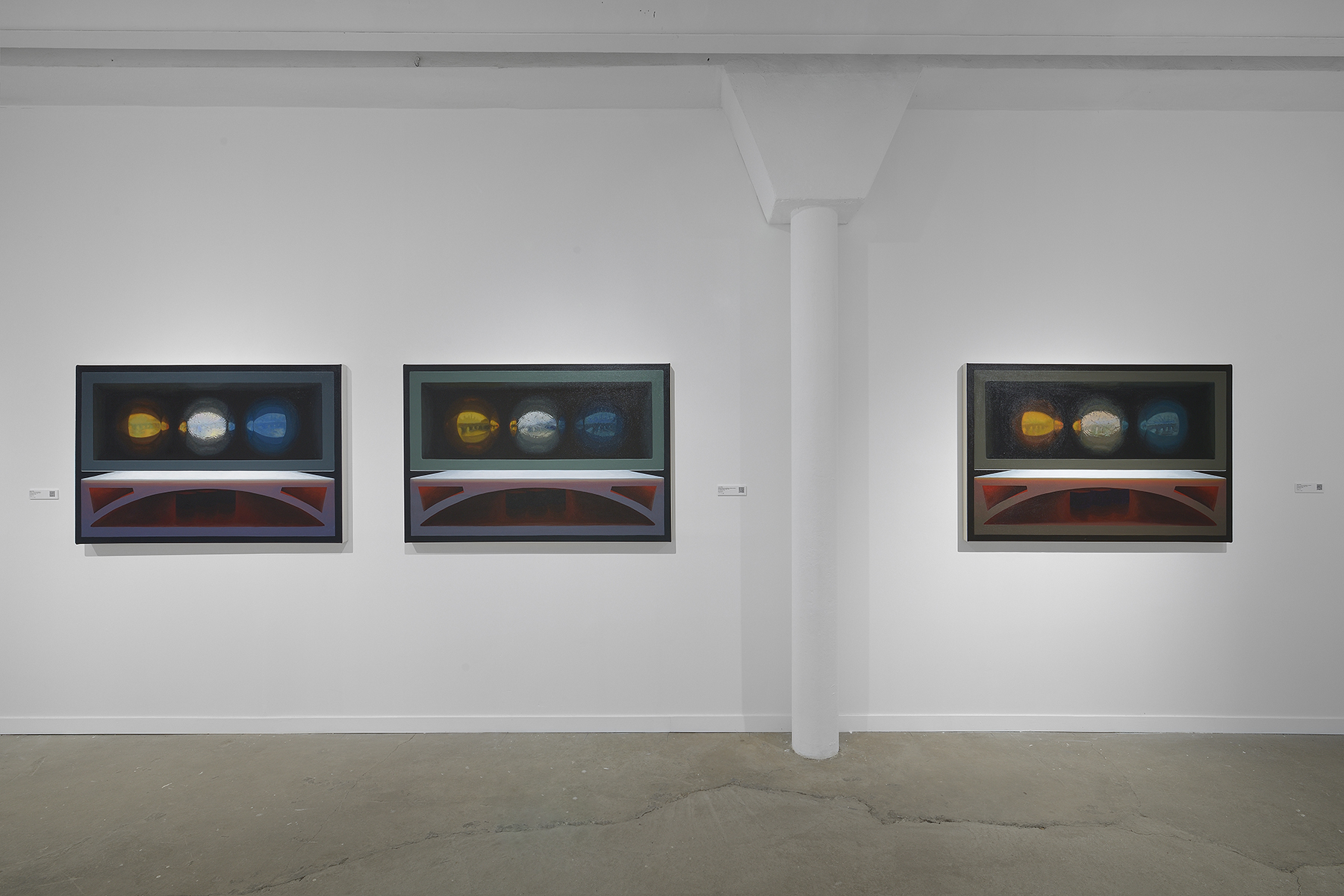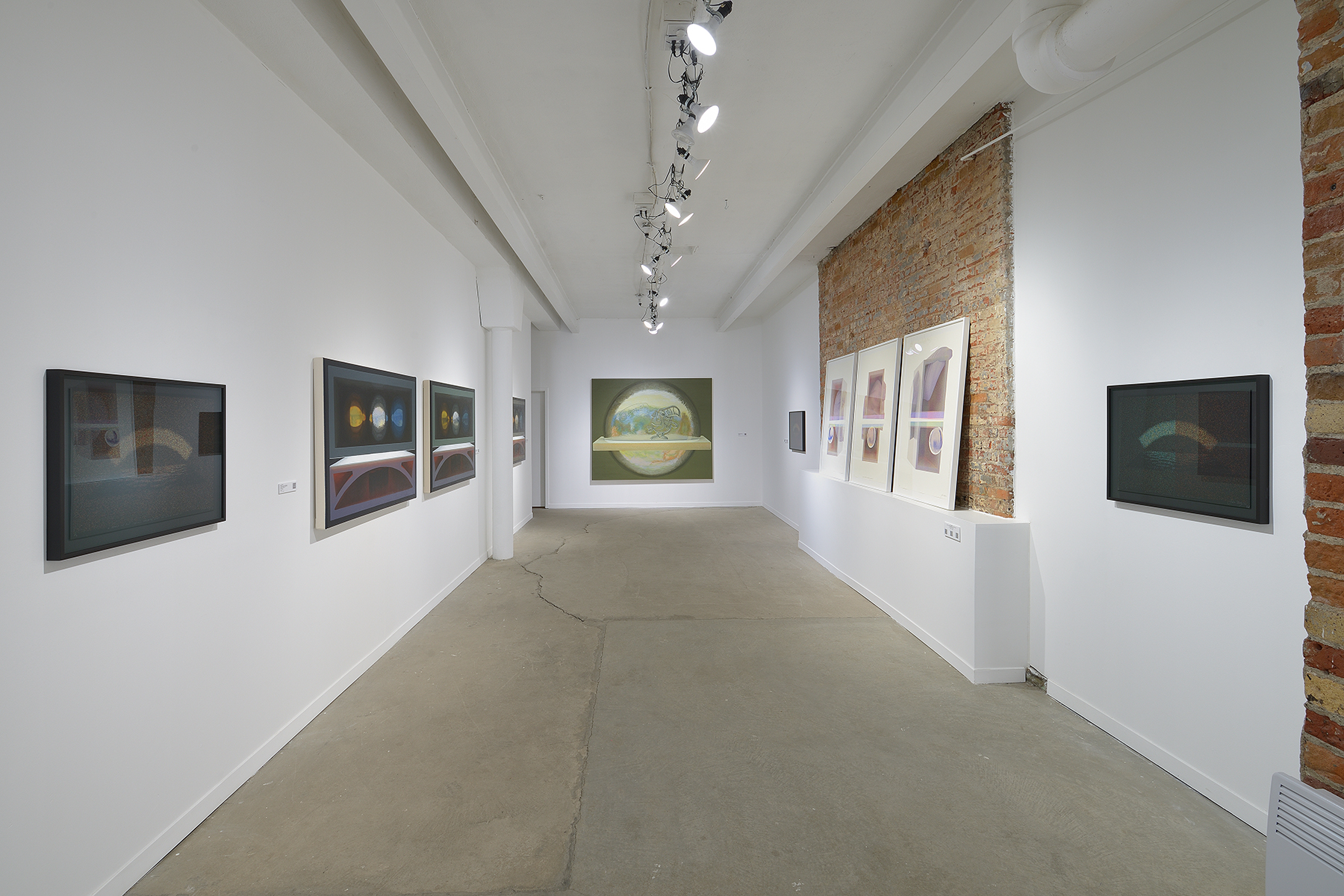Devant Claude Monet brings together works where the common thread is the representation of virtual scenes, illuminated with paintings by the great master of impressionism: Claude Monet. With 3D computer graphics, Boily has generated compositions in which the light, and consequently, the atmosphere, ambiance and coloring, are shaped by Monet’s paintings placed before them. These images are subsequently rendered into paint or via the silkscreen process. The result is a mise en abyme that maintains a true interdisciplinary dialogue between these different media.
« Of course, I have a lot of admiration for Claude Monet and tremendous respect for his work. But I must admit that I use his images as raw material, just like the colours that come out of my tubes. »
– Julien Boily
By quoting Monet, Boily takes us back to the origins of the idea of color mixing based on juxtaposition, to Seurat’s pointillism, and to the modern matrix image (bitmap). The painting then participates, like inverted binoculars, in taking the necessary distance to observe the phenomenon.
Originally from Saint-Gédéon in Lac-Saint-Jean, Julien Boily lives and works in the city of Saguenay. He has presented more than a dozen solo exhibitions in several cities in Quebec and has participated in a numerous group exhibitions and contemporary art fairs in Canada, France, Greece, Sweden, Germany, Finland, Switzerland and Hungary. Creator of the Year 2017 in Saguenay-Lac-Saint-Jean, he is also one of the 2017 laureates of the Elizabeth Greenshields Foundation, which recognizes the excellence of visual artists around the world. His works can be found in several collections such as those of the Musée d’art contemporain de Montréal, the Musée national des beaux-arts du Québec, the City of Montreal collection, the City of Laval collection and Desjardins.
Adopting a conventional pictorial approach, Boily paints still lifes composed of forms generated by 3D computer graphics. Often made of simple primitive geometries, his compositions bring to the forefront the materiality of these objects and the way they interact with the light and the environment that surround them. These properties that are emulated by digital tools today have been at the heart of painters’ artistic preoccupations for centuries, namely the interaction between objects and light, perspective, reflection, refraction and many others.














